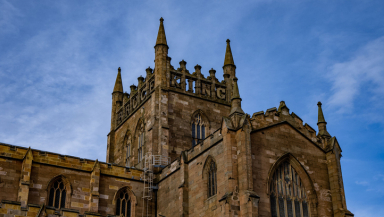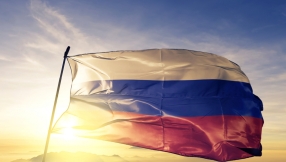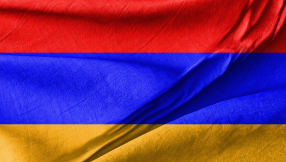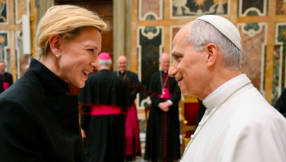
16 November is the day when people remember St Margaret of Scotland. She was born in Hungary and became Queen of Scotland, where she restored the religious life of the country. This is her story …
Family History
Margaret was from the old English Saxon royal family that ruled Wessex, which had fled into exile — first from the Danes and Vikings, and then from the Normans. She was descended from King Alfred the Great and related to Edward the Confessor.
Exile in Hungary
How St Margaret came to be born in Hungary in 1045 is rooted in the complicated politics of the so-called English Dark Ages. Margaret’s grandfather, Edmund Ironside, was the son of King Ethelred II, known as “the Unready.” Edmund Ironside was briefly King of England in 1016. After battles with the Danes, Edmund died — some say he was murdered — and King Canute (Cnut), the Danish king, became King of England. King Edmund’s two sons, Edward and Edmund, were sent into exile and ended up in Hungary.
In Hungary, Edmund died, and Edward, known as “the Exile,” married Agatha, said to be the daughter of the King of Hungary and related to the saintly King Stephen of Hungary. Edward the Exile and Agatha had three children born in Hungary: Edgar, Margaret, and Cristina. These children grew up speaking English, using Latin, and probably knew Hungarian (Magyar).
Return to England
Meanwhile, Danish dominance in England ended in 1042, and Edward the Confessor, half-brother of Edmund Ironside, became king. In 1057, during his reign, it was considered safe for his nephew Edward “the Exile” to return to England and bring his Hungarian-born children Edgar, Margaret, and Cristina. As a nephew of the childless Edward the Confessor, Edward the Exile was seen as the heir. However, he died before Edward the Confessor, leaving his son Edgar Atheling as heir.
When Edward the Confessor died in 1066, England needed a strong king in the face of Norse and Norman threats, and the Witan (Saxon Parliament) elected Edward’s brother-in-law, Harold Godwinson, as king. King Harold II immediately defeated a Norse invasion at Stamford Bridge, then headed south with a depleted and tired army to face a Norman invasion near Hastings.
Exile to Scotland
When King Harold II was killed at the Battle of Hastings in 1066, the Witan elected Edgar Atheling as King of England. He is sometimes called Edgar II and was technically the last titular king of England. He was due to be crowned at Westminster Abbey but never formally ruled. He submitted to William at Berkhamsted Castle in Hertfordshire, after which William the Conqueror headed to London and had himself crowned instead.
Edgar’s life was then in danger, as many English considered him the true king, making him a potential threat in William’s eyes. In 1068 Edgar, his mother Agatha, and his sisters Cristina and Margaret fled England for safety. Some say they were heading to Europe on the way to Hungary when their ship was blown off course. In any case, they ended up in Scotland, where they were welcomed by King Malcolm III of Alba at the royal court at Dunfermline.
Margaret and her sister Cristina were strong Christians and were known for their prayer and devotion. Margaret stayed in Scotland, but Cristina returned to England to become abbess of the convent at Romsey in Hampshire.
Queen of Scotland
In 1070 Edgar Atheling married King Malcolm’s sister Margaret Canmore, and King Malcolm III married Margaret of Wessex, who became Queen Margaret of Scotland. Malcolm III tried to help Edgar reclaim the throne of England, but to no avail. Meanwhile, King Malcolm and Queen Margaret had eight children, and she grew to love her adopted country. It is said that she and Malcolm spoke English and that she never became fluent in Gaelic. Their six sons were Edward, Edmund, Ethelred, Edgar, Alexander, and David; their two daughters, Edith and Mary, were sent to be taught by Cristina at Romsey.
Church Reforms
Queen Margaret despaired at the state of the Church in Scotland at the time and instituted many reforms. She found a corrupt Church whose rites aligned more with ancient Celtic traditions than with the Catholic traditions she knew from Hungary and England. She called Church Councils to address reforms and standardise practices. As a result, the observance of Lent became common, and the Christian day of rest was changed to Sunday instead of Saturday.
Queen Margaret founded churches, monasteries, and hostels; notably, she restored the Abbey at Iona and established the abbey at Dunfermline. She cared for the needy through charitable works and founded schools, hospitals, and orphanages. She also used her influence with King Malcolm III to improve life among the Scottish clans. She redeemed English slaves by buying their freedom.
She sought to make travel easier for pilgrims in Scotland and opened the historic “Queen’s Ferry” route across the Firth of Forth to help pilgrims visiting the supposed relics of St Andrew at St Andrews in Fife. She became known as the “Pearl of Scotland” and an archetype of the “just ruler.”
Death
King Malcolm III died in 1093, and Queen Margaret died in Edinburgh shortly afterwards on 16 November 1093, aged 48. It was said that she died of grief. She was buried at Dunfermline Abbey, which she had founded.
Legacy
In 1100 Queen Margaret’s daughter Edith married King Henry I of England, son of William the Conqueror, at Westminster Abbey, taking the regnal name of Queen Matilda. The marriage was popular with the English because the royal family, as descendants of Henry I and Matilda, could then claim descent from both William the Conqueror and King Alfred the Great.
Canonisation
Queen Margaret was canonised in 1250 by Pope Innocent IV, after being petitioned by her descendant King Alexander II of Scotland and his bishops. She was made a saint in recognition of her holiness, loyalty to the Church, religious reform, and charity. She is known as St Margaret of Scotland.
In 1250, following her canonisation, her remains were disinterred and placed in a reliquary at the high altar. Dunfermline Abbey became a place of pilgrimage in her honour. St Margaret is considered the patron saint of large families, widows, queens, the death of children, and widowed people. She is sometimes also considered a patron saint of Scotland alongside St Andrew.
Dedications
Many churches are dedicated to St Margaret of Scotland. Most are in Scotland, but a few are found in England, the USA, and Australia. The most notable is St Margaret’s Chapel in Edinburgh Castle, which dates back to the 12th century and is the oldest surviving building in Edinburgh.
Day of Remembrance
16 November, the anniversary of her death, became her feast day. She is remembered in the Scottish Episcopal Church, the Catholic Church, and across the Anglican Communion.
Collect
The collect prayer for Margaret of Scotland is:
“God, the ruler of all, who called your servant Margaret to an earthly throne and gave her zeal for your Church and love for your people that she might advance your heavenly kingdom: mercifully grant that we who commemorate her example may be fruitful in good works and attain to the glorious crown of your saints; through Jesus Christ your Son our Lord, who is alive and reigns with you, in the unity of the Holy Spirit, one God, now and for ever.”













